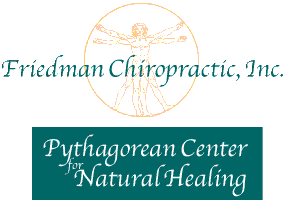
UNDERSTANDING THE COURSE OF HEALING
|
The phenomenon of the "healing crisis" is not discussed much in health circles these days. However, the concept is as relevant today as it was 100 years ago when it first began to appear in Western literature. An understanding of healing crises could, in fact, be beneficial to many who are now embarking on the path of healing.
There is a belief among homeopaths and chiropractors that an individual in the process of getting well will undergo some sort of healing reaction. This reaction can be strong or mild, but it must and will manifest. Knowing that a healing crisis is inevitable, and having some idea of the ways in which it might manifest, will, at the very least, prepare a patient for its arrival and may also offer some comfort through the duration of the "crisis." Generally, a healing crisis initiates when a person who is undergoing some form of natural therapy (assuming that it is the correct approach) experiences some improvement. The patient feels better and stronger, both physically and mentally. Then, without warning, the old illness or even symptoms of by-gone illnesses reappear. When this happens, most patients become confused and discouraged, believing that all the progress they had made is now lost and that they must start over or give up. However, that is far from what is really occurring. Anyone who has ever experienced any form of chronic or stubborn illness or condition, whether internal, such as an ulcer, or structural, such as a long-term back disability, can attest to the fact that there is a loss of energy associated with the illness. Lack of vitality always accompanies chronic health conditions, and this energy loss limits or even prevents healing. The body is stuck in a rut, so to speak; it is unable to garner its forces sufficiently to restore well-being. When improvement occurs, vitality is restored to the body, and its self-healing mechanisms are awakened. As healing begins, symptoms reappear as part of the body's process of eliminating diseased cells and toxins from its tissues. Hence the assessment that the healing "crisis" is actually good news because it is a sign and signal of deep healing and restoration. It should be added that, not surprisingly, the patient always feels better after the healing crisis has run its course. The healing crisis is recognized today by many natural health practitioners. Homeopaths call these incidents "aggravations" and chiropracters refer to the phenomenon as "retracing." What is important for us to understand is that a healing crisis, or any healing that will sustain us over the long haul, must occur at some point in the therapeutic program. It can help to know what, in general, to anticipate. In addition to the reactivation of old symptoms, a patient might also feel unexpectedly exhausted, experience flu-like symptoms, or feel achiness all over the body. These symptoms usually pass in 24 to 48 hours and the patient will feel stronger in some way after the event. Homeopaths and chiropractors have also noted that the body has a definite priority and pattern of using its own healing energy to get well. A famous American homeopath, Constantine Herring, MD., formulated a theory (known as the Herring Law of Cure) which says that the healing energy awakens first at the deepest level, then moves to the surface where it begins healing the body from head to toe. In a similar priority, the body's healing mechanism will attend to the most current illness first and move through to the oldest (historically) last. In other words (as stated in the Law of Cure), disease is healed "from the inside out, from the head down, and in the reverse order that it appeared." Daniel David Palmer, DC., founder of chiropractic, often quoted this theory which he described as the "ADIOS Principle" in health restoration, "adios" being an acronym for "above, down, inside, out." It should also be mentioned that old mental or emotional symptoms may re-activate during a healing crisis. Dr. R.H. Van Wyck, Director of the Vancouver Institute for Applied Psychology has stated, "Each physical state is accompanied by a psychological counterpart and strictly psychotrauma or heavy emotional material is also re-experienced during the reversal and healing process." Healing crises are very welcome signs when we experience them. Unfortunately, in today's world, these "aggravations" or "retracings" do not occur as frequently as they did in the past. The intense social and economic stresses facing most people today, as well as the toxic load in the environment, often stand in the body's way and prevent a restoration of vitality needed to initiate a healing crisis. Many years ago, renowned chiropractor and nutritionist, Dr. Bernard Jensen, said to this author: "I do not believe anyone in Los Angeles can develop a healing crisis." He was speaking of the pollution in that city which has now spread world-wide. The obstacles are many, but the potential is still there for a healing crisis. Understanding that these "aggravations" or "retracings" are part of the recovery process de-mystifies natural health. When such an event appears, we can then welcome it rather than suppress it. © Copyright 1999 The Friedman Chiropractic Center, Inc.. All Rights Reserved. |
TO
RETURN TO SITE DIRECTORY, CLICK ON ARROW ![]()

For
additional information or to receive an information
packet, Jeffrey I.
Friedman, D.C. Petaluma
Annex: 405 D Street, Suite 2, Petaluma, CA
94952-3006 |
© Copyright 2015 Friedman Chiropractic, Inc. All Rights Reserved.